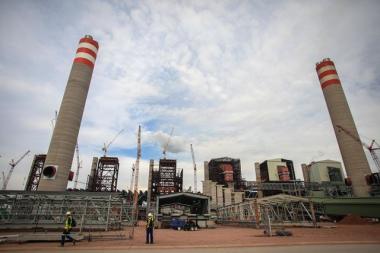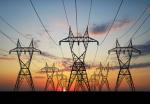Eskom's Medupi unit to be commissioned despite failing tests
 The sixth unit of Eskom's Medupi power station is going to be commissioned and connected to the grid, despite tests showing that it is not working as it should.
The sixth unit of Eskom's Medupi power station is going to be commissioned and connected to the grid, despite tests showing that it is not working as it should.
The sixth unit of Eskom's Medupi power station is going to be commissioned and connected to the grid, despite tests showing that it is not working as it should.
This is yet another alarming development at Medupi, which has been feted by Eskom as the solution to South Africa’s power woes, but which is already two years late and R40-billion over budget. Each of the six units at Medupi will provide 800MW of power, boosting the 40000MW national grid by 12%.
But the problem at Unit 6 is that excessive dirt has been found in the steam which is being blown out of the boilers installed by Mitsubishi-Hitachi.
Roman Crookes, Eskom’s managing director on the 900ha construction site in Limpopo, said that blow-through tests — in which the steam quality and velocity is tested — had been expected to take two weeks.
But Crookes said these tests had been going for almost two months now, and the steam was not yet at the standard the unit was designed to use.
In addition to the excessive dirt particles, the steam isn’t coming out of the boiler fast enough to meet Alstom’s specifications. In its contract with Eskom, Alstom stipulated that for the turbines to spin as required, the steam must reach a velocity of 200m/second, considerably faster than the current 182m/second.
According to Crookes, this is actually a good thing since it will slow down the speed at which the dirt particles leave the boiler and hit the massive spinning blades. The lower velocity would not “compromise the machine”.
However, senior engineers at Medupi, who spoke on condition they wouldn’t be named, said last month that the dirt and velocity problems were more serious than Crookes was making out. The turbine “will be destroyed”, one said.
The men blamed the Mitsubishi-Hitachi-built boiler: “There is a huge problem (with) the design of the piping. Hitachi has made the wrong design . [it] isn’t going to work.”
Eskom says otherwise, and is ready to flick the switch to green. But experts say that the result will be that this enormous, hi-tech piece of engineering will be on the scrap heap before intended.
Mitsubishi-Hitachi, Alstom and Eskom have for weeks been in discussion about the decision to go ahead with the commissioning — but ultimately it is Eskom’s call.
Mitsubishi-Hitachi is now washing its hands of the less than optimal performance of its boiler. David Milner, spokesman for the Japanese company, said this week: “We have a contract with Eskom with technical specifications, and we have met all the requirements. Why there is more dirt [than expected] in the boilers, we don’t know.”
Commissioning the unit at this stage was “a decision Eskom has to take”, Milner said.
Crookes admitted on Thursday that going ahead now could affect Alstom’s guarantee of its multimillion-rand turbine.
In response to a query last month regarding Eskom’s commissioning the unit despite the suboptimal test results, Alstom spokesman Riccardo Pierobon said: “The steam quality needs to be according to the specified values to avoid potential damage to the turbines.”
Alstom did not comment further this week when asked.
Yet Crookes said an “economic decision” had been taken to fire up the unit within weeks.
Continuing to run the expensive blow tests “might or might not” reduce the amount of dirt in the massive pipes, he said.
Crookes said Eskom had been advised by several international bodies that the dirt was unlikely to cause significant damage.
The pros and cons needed to be weighed up. It would be cheaper to replace the turbine a few years early than keep running the tests. And, as was evident from the briefing by Eskom CEO Tshediso Matona this week, the country needs the power more than it needs Alstom’s warranty.
A few hundred million rand is pocket change compared with a few months’ worth of diesel being sucked up by the Capebased Open-Cycle Gas Turbines, which Eskom is using to bolster its flagging grid.
Those gas turbines, Ankerlig and Gourikwa, ploughed through about 140 million litres of diesel in November alone.
With the government discount, this cost taxpayers about R1-billion. Though demand for power dropped from mid- December to mid-January, Eskom executives said on Thursday that the utility would be handing over this sort of cash for the conceivable future.
While few South Africans take seriously any dates Eskom trawls out for Medupi’s progress, Crookes says the first unit will be operating at full power from June. That will provide only 800MW, but with generating capacity crumbling and long overdue emergency repairs on the way, anything is better than nothing.

















